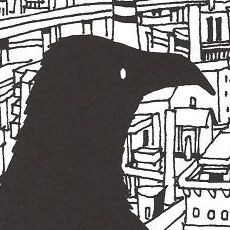Tag: gainax
-
Lost in Transition: Gunbuster the Movie
/
Read More →: Lost in Transition: Gunbuster the MovieI had low expectations when I bought the Gunbuster movie on blu-ray. The visuals looked underwhelming, as did the plot summary. Still, I felt that as an anime fan I had an obligation to watch a Gainax classic, and I’m happy I did. Gainax could have created a forgettable story about girls battling aliens with giant…
-
Anime Trends 2011: At least no one (of note) went bankrupt
/
Read More →: Anime Trends 2011: At least no one (of note) went bankruptAll told, 2011 was a stable year in the anime business. No anime company of any worth (so 4Kids doesn’t count) went bankrupt, although over in the manga world TokyoPop bit the bullet. The tsunami and resulting nuclear incident will unfortunately overshadow anything else that happened with anime this year. While there were no dramatic…
-
Panty & Stocking with my broken heart
Read More →: Panty & Stocking with my broken heartThe above image is from Panty and Stocking with Garterbelt, but one would forgive you if you had to double take; the second half of episode 5 feels like it’s from a completely different series. Not only has the art style completely shifted, so, indeed, has the tone. Gone, for the most part, is the…
-
The town where nothing ever happens: FLCL & I
Read More →: The town where nothing ever happens: FLCL & IFrankly, I lack the words to talk about Satoshi Kon’s passing; there are others who have said and will say things more eloquently. Instead, I offer you a diversion: FLCL. I meant to write this post a while back, but never go around to it. Somehow, it’s been a very long, and a little bit…
-
Shoujo fantasy Gurren Lagann: Sense of Wonder by Akemi Hayashi
Read More →: Shoujo fantasy Gurren Lagann: Sense of Wonder by Akemi HayashiReality is rarely as poetic, but then, a dream is not supposed to be real.
-
One does not care to acknowledge the mistakes of one's youth
Read More →: One does not care to acknowledge the mistakes of one's youthHere is a fair warning; if you have issues with self-loathing, save yourself the agony and don’t watch Otaku no Video. It will depress you.
-
Never knows best; my 'review' of FLCL
/
/ ReviewsRead More →: Never knows best; my 'review' of FLCLWriting this now, I’m reminded of people (some of them anime fans) who will often say that watching these funny Japanese cartoons isn’t “hip”, isn’t something to be proud of, but watching this show, I’m ready to call that bull-****. Anime can be stylish, hip, cool, fun, trendy and everything else under the sun, and…
-
Musical memories of Gurren Lagann, recalling a whimsical dystopia
/
Read More →: Musical memories of Gurren Lagann, recalling a whimsical dystopiaNot sure how I missed this, but the full soundtrack for Tengen Toppa Gurren Lagann was released recently; that’s 51 tracks of epic, exciting, heavenly music, and even better, it contains the one song I’ve be longing to hear since late-July. I’m talking about track 13 on Disc no.2; the translated title is “The Days…
-
The end of Tengen Toppa Gurren Lagann
/
/ ReviewsRead More →: The end of Tengen Toppa Gurren LagannYet as the dark of night finally drew in and the stars twinkled with an ephemeral beauty, the sea of emotion raging inside this blogger fell suddenly calm in anticipation of the end. That is, the end of Tengen Toppa Gurren Lagann.
-
I Accept Your Dying Wish! Gurren Lagann 25
/
/ ReviewsRead More →: I Accept Your Dying Wish! Gurren Lagann 25It’s a disservice to myself and to you, dear reader, because while I’ve tried to keep a lid on it, Gurren Lagann just keeps getting better, and right now I’m oh so close to claiming it as my favourite anime of all time. So, pulsing with spiral energy, mine rippling rantage on episode the 25th…
